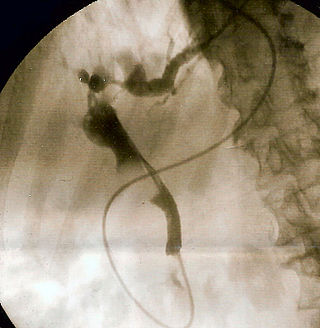At common law, damages are a remedy in the form of a monetary award to be paid to a claimant as compensation for loss or injury. To warrant the award, the claimant must show that a breach of duty has caused foreseeable loss. To be recognized at law, the loss must involve damage to property, or mental or physical injury; pure economic loss is rarely recognized for the award of damages.
Negligence is a failure to exercise appropriate care expected to be exercised in similar circumstances.
A tort is a civil wrong that causes a claimant to suffer loss or harm, resulting in legal liability for the person who commits the tortious act. Tort law can be contrasted with criminal law, which deals with criminal wrongs that are punishable by the state. While criminal law aims to punish individuals who commit crimes, tort law aims to compensate individuals who suffer harm as a result of the actions of others. Some wrongful acts, such as assault and battery, can result in both a civil lawsuit and a criminal prosecution in countries where the civil and criminal legal systems are separate. Tort law may also be contrasted with contract law, which provides civil remedies after breach of a duty that arises from a contract. Obligations in both tort and criminal law are more fundamental and are imposed regardless of whether the parties have a contract.
In English civil litigation, costs are the lawyers' fees and disbursements of the parties.
The mineral asbestos is subject to a wide range of laws and regulations that relate to its production and use, including mining, manufacturing, use and disposal. Injuries attributed to asbestos have resulted in both workers' compensation claims and injury litigation. Health problems attributed to asbestos include asbestosis, mesothelioma, lung cancer, and diffuse pleural thickening.

English tort law concerns the compensation for harm to people's rights to health and safety, a clean environment, property, their economic interests, or their reputations. A "tort" is a wrong in civil law, rather than criminal law, that usually requires a payment of money to make up for damage that is caused. Alongside contracts and unjust enrichment, tort law is usually seen as forming one of the three main pillars of the law of obligations.

In common law jurisdictions, a misrepresentation is a false or misleading statement of fact made during negotiations by one party to another, the statement then inducing that other party to enter into a contract. The misled party may normally rescind the contract, and sometimes may be awarded damages as well.
Causation in English law concerns the legal tests of remoteness, causation and foreseeability in the tort of negligence. It is also relevant for English criminal law and English contract law.
Breaking the chain refers in English law to the idea that causal connections are deemed to finish. Even if the defendant can be shown to have acted negligently, there will be no liability if some new intervening act breaks the chain of causation between that negligence and the loss or damage sustained by the claimant.
McGhee v National Coal Board [1972] UKHL 7, 1 W.L.R. 1, is a leading tort case decided by the House of Lords. The Lords held that where a breach of duty has a material effect on the likelihood of injury then the subsequent injury will be said to have been caused by the breach. This approach was taken to resolve injustice arising from the orthodox 'but for' test for factual causation. Otherwise, under the 'but for' test, multiple potential causes of harm would hold equal causal weighting, making it impossible to establish a greater than 50% probability of one cause.

Tort reform consists of changes in the civil justice system in common law countries that aim to reduce the ability of plaintiffs to bring tort litigation or to reduce damages they can receive. Such changes are generally justified under the grounds that litigation is an inefficient means to compensate plaintiffs; that tort law permits frivolous or otherwise undesirable litigation to crowd the court system; or that the fear of litigation can serve to curtail innovation, raise the cost of consumer goods or insurance premiums for suppliers of services, and increase legal costs for businesses. Tort reform has primarily been prominent in common law jurisdictions, where criticism of judge-made rules regarding tort actions manifests in calls for statutory reform by the legislature.
The tort of deceit is a type of legal injury that occurs when a person intentionally and knowingly deceives another person into an action that damages them. Specifically, deceit requires that the tortfeasor

Fairchild v Glenhaven Funeral Services Ltd [2002] UKHL 22 is a leading case on causation in English tort law. It concerned malignant mesothelioma, a deadly disease caused by breathing asbestos fibres. The House of Lords approved the test of "materially increasing risk" of harm, as a deviation in some circumstances from the ordinary "balance of probabilities" test under the "but for" standard.
Wilsher v Essex Area Health Authority [1988] AC 1074 is an English tort law case concerning the "material increase of risk" test for causation.

Barker v Corus (UK) plc [2006] UKHL 20 is a notable House of Lords decision in the area of industrial liability in English tort law, which deals with the area of causation. In this case, the House of Lords reconsidered its ruling in the earlier landmark case Fairchild v Glenhaven Funeral Services Ltd concerning the liability of multiple tortfeasors.
In England and Wales, a claims management company is a business that offers claims management services to the public. Claims management services consist of advice or services in respect of claims for compensation, restitution, repayment or any other remedy for loss or damage, or in respect of some other obligation. Claims management services cover litigation, or claims under regulation schemes or voluntary arrangements.

The Armley asbestos disaster is an ongoing health issue originating in Armley, a suburb of Leeds, West Yorkshire, England. Described by Dr. Geoffrey Tweedale as a "social disaster", it involved the contamination with asbestos dust of an area consisting of around 1,000 houses in the Armley Lodge area of the city.

Bailey v Ministry of Defence [2008] EWCA Civ 883 is an English tort law case. It concerns the problematic question of factual causation, and the interplay of the "but for" test and its relaxation through a "material contribution" test.
A v Hoare, [2008] UKHL 6, is a leading tort case in British law, decided by the House of Lords in 2008.
In Newport News, Virginia, asbestos litigation is driven by the presence of Newport News Shipbuilding and other defense contractors. Asbestos was widely used in the shipbuilding industry.








